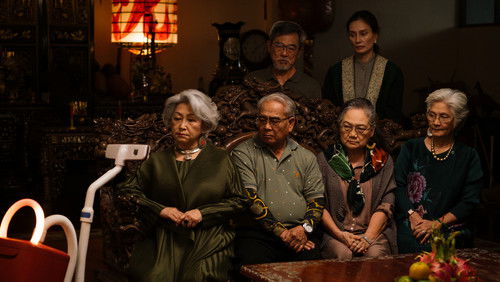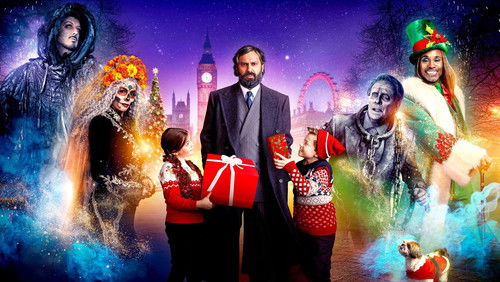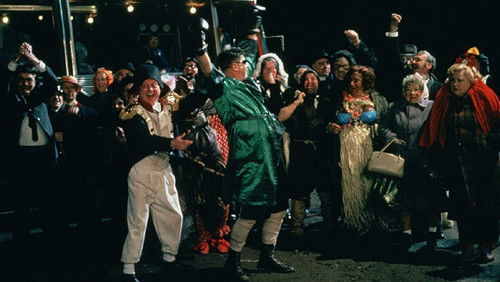Mel Brooks letzte Verrücktheit – Silent Movie (1976)
69KMel Brooks letzte Verrücktheit – Silent Movie: Directed by Mel Brooks. With Mel Brooks, Marty Feldman, Dom DeLuise, Sid Caesar. A film director and his strange friends struggle to produce the first major silent feature film in forty years.
“Mel Brooks plays a has-been director named Mel Funn in this spoof of Hollywood and silent movies. The film is set in some alternate universe era that is an amalgamation of 1930s through 1970s Hollywood. In the filmu0026#39;s world, itu0026#39;s the age of the u0026quot;talkiesu0026quot;, which have apparently been around for some time. Funnu0026#39;s latest script, what heu0026#39;s banking on as his comeback, is retro–heu0026#39;s written a silent movie. Naturally, heu0026#39;s having problems selling his script. Shortly after the film begins, Funn, who is making the rounds with his two questionable companions, Marty Eggs (Marty Feldman) and Dom Bell (Dom DeLuise), shops his script to one last big studio head, played by Sid Caesar. Caesaru0026#39;s studio is about to go under if they canu0026#39;t produce a blockbuster. He initially tries to throw Funn out, but when Funn promises he can get big stars for his film, Caesar gives him a chance. If he can get the stars, heu0026#39;s got a deal. Silent Movie is primarily the story of Funn, Eggs and Bell trying to get stars to do their film.u003cbr/u003eu003cbr/u003eOf course the irony of Silent Movie is that itu0026#39;s a silent movie about how silent movies would be ridiculous to produce in a later age in Hollywood. The Mel Brooks film itself is ridiculous film in many ways, not the least of which is that it is silent. Brooks also embraces another fading convention–humor based on slapstick and vaudeville.u003cbr/u003eu003cbr/u003eTo a large extent, Silent Movie exists to enable a series of gags, mostly centered on various extended cameos. Often the gags are like a classic comedy compilation–we get Sid Caesar doing his u0026quot;facial tick schticku0026quot;, Charlie Callas doing some u0026quot;blind manu0026quot; slapstick, Henny Youngman with a fly in his soup, and so on. Marty Feldmanu0026#39;s u0026quot;Eggsu0026quot; might cause us to ask where the ham is–these classic routines are it.u003cbr/u003eu003cbr/u003eThere are also longer scenes with potential u0026quot;starsu0026quot; of the film. These include Burt Reynolds, James Caan, Bernadette Peters, Liza Minelli, Paul Newman, Anne Bancroft, and Marcel Marceau. Sometimes they spoof themselves, sometimes they play roles in new gags, and sometimes they come pretty close to their actual public personae.u003cbr/u003eu003cbr/u003eMaybe Twentieth Century Fox told Brooks in reality that if he wanted to do a silent film spoof, theyu0026#39;d only bankroll it if he had a lot of stars attached. So he got them, working them into the film without really working them into the fabric of the film (theyu0026#39;re present as cameos, not as stars). But thereu0026#39;s also a conceit in Silent Movie, as a fiction, that weu0026#39;re not watching the actual film but a film about getting ready to make a film, maybe echoing what happened in u0026quot;real lifeu0026quot; in preparing to make the film. If you want complex self-referential layers, focused on blurring the distinctions between art and reality, Silent Movie definitely provides that. In many respects, the layering is similar to the more recent Incident at Loch Ness (2004).u003cbr/u003eu003cbr/u003eMaybe such depth is surprising given that the surface aim of Silent Movie is to provide absurdities so you can laugh. The contrast to those easier to decipher surface qualities underscores interesting facts both about the public perception of Mel Brooks and the history of his career. Brooks has often been perceived as aiming for a kind of modernization of the Three Stooges. While his films have qualities that allow for that comparison, it is far from telling the whole story.u003cbr/u003eu003cbr/u003eBrooksu0026#39; films (as director) at least through 1981u0026#39;s History of the World, Part I all have a strong postmodernism beneath the veneer. Heu0026#39;s not just making us laugh through slapstick and clever, pun-filled dialogue, heu0026#39;s also saying a lot of very intelligent things about the medium of film, as well as the relationship between films and reality, and between films and the audience. A lot of his humor rests on toying with the typical filmic or narrative conventions. For example, he routinely breaks through the u0026quot;fourth wallu0026quot; and he routinely breaks the implicit genre contracts he makes. Itu0026#39;s just as intellectual as anything Monty Python did–at least until 1987u0026#39;s Spaceballs, which can be seen as the turning point from Brooksu0026#39; earlier works of genius to a much more straightforward way of storytelling. Itu0026#39;s not that Spaceballs and what followed werenu0026#39;t good, but they do not have the same sense of postmodernist play to them as is present in Silent Movie.u003cbr/u003eu003cbr/u003eIn addition to all of the fiction/reality layering, the film breaks the u0026quot;genreu0026quot; contracts of silent films in that once in awhile a character says something and we hear their voice on the soundtrack. The music is also frequently synced to the action (this wasnu0026#39;t possible with actual silent films–the technical u0026quot;solutionu0026quot; that allowed synced music also allowed synced dialogue), and occasionally there is foley (sound effects that are supposed to be the sound of character actions, like walking) synced on the audio track as well. It underscores that this is a faux silent movie, despite the many other apparent cues of authenticity. This is a relatively minor example of postmodernism in the film, perhaps, but nevertheless illustrative of Brooksu0026#39; goals and interesting to note while watching.u003cbr/u003eu003cbr/u003eAs interesting as all of that is, Silent Movie isnu0026#39;t a complete success. Sometimes itu0026#39;s just a bit too hokey or uneventful for its own good. But itu0026#39;s still an important entry in Brooksu0026#39; early oeuvre, which is his most significant period in my view.”









